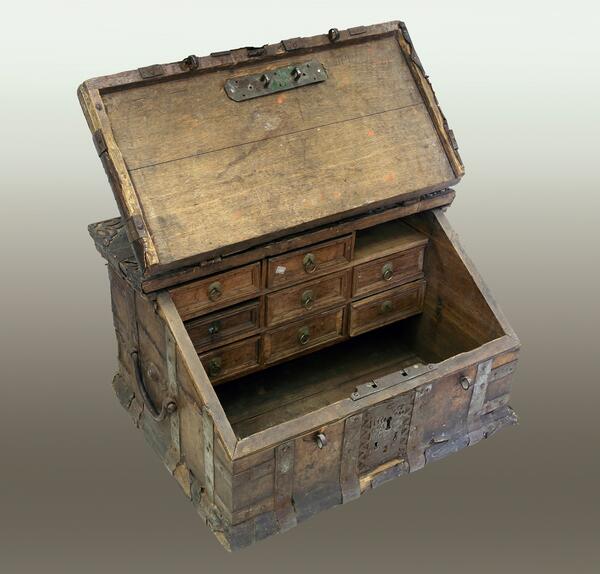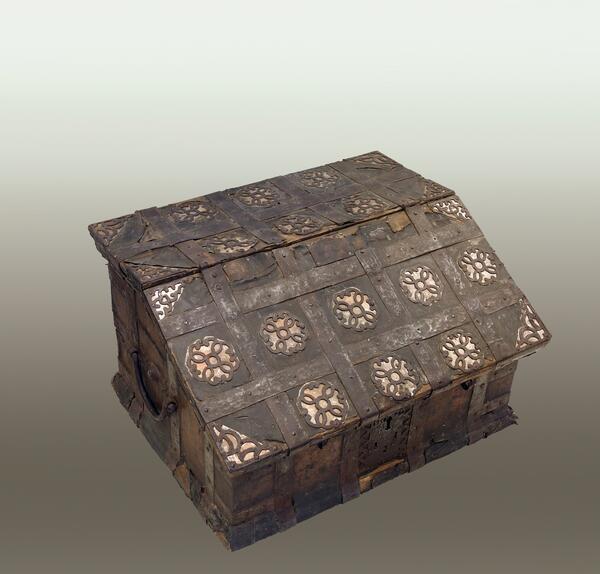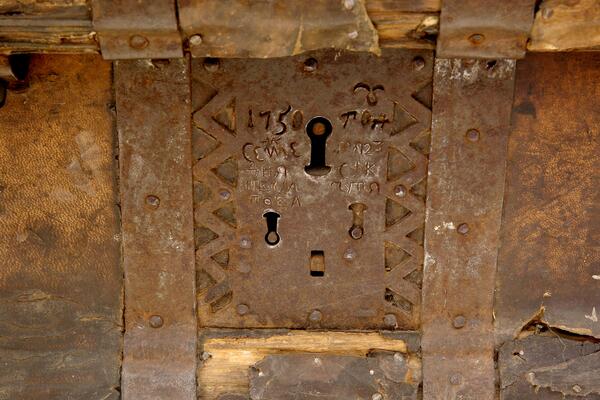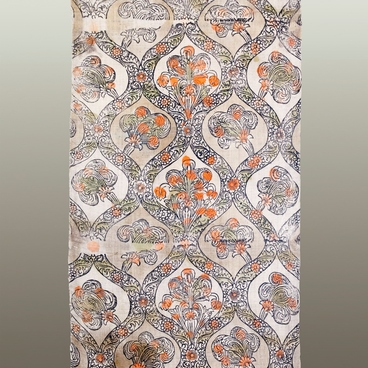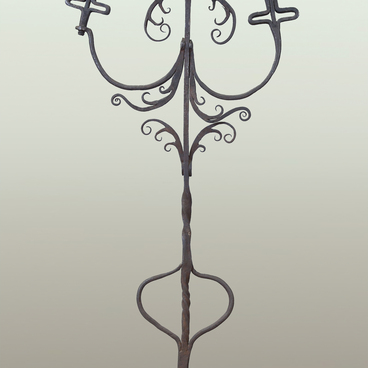A podgolovnik is a type of Russian small chests. Travelers put such chests under their head during rest (hence the name from the Russian word “golova” meaning “head”). Podgolovniks were used to store documents, valuables, money, and letters. They were popular among different segments of the population: they were found in peasant huts, in the houses of townspeople, in the chambers of the highest nobility, and in royal mansions. For a long time these items were manufactured in the vast territories of the Russian North and in other regions of the country.
The Folk Art collection of the Russian Museum includes the presented podgolovnik, made in 1750. It is of considerable size. The outer surfaces are covered in leather and smooth iron strips arranged in a “cage” pattern. There are openwork rosettes with a mica lining inside each square. There are openwork triangles in the corners of the lid and the upper side. The lock features an engraved inscription in a zigzag frame:
The Folk Art collection of the Russian Museum includes the presented podgolovnik, made in 1750. It is of considerable size. The outer surfaces are covered in leather and smooth iron strips arranged in a “cage” pattern. There are openwork rosettes with a mica lining inside each square. There are openwork triangles in the corners of the lid and the upper side. The lock features an engraved inscription in a zigzag frame:

